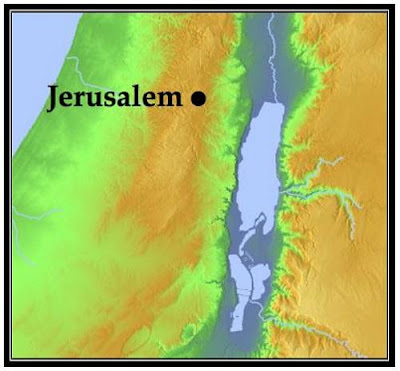DIGGING UP THE BIBLE
Important Archeological Finds that help Us Understand Scripture
pdf
Dr. Paul Manuel—2017
 |
Lachish Latrine
(8th century BC) |
When Ahab came to the throne of Judah, he led people into unprecedented apostasy away from the Lord:
Ahab son of Omri did more evil in the eyes of the LORD than any of those before him. He married Jezebel daughter of Ethbaal king of the Sidonians, and began to serve Baal and worship him. He set up an altar for Baal in the temple of Baal that he built in Samaria. (1 Kgs 16:30-32)
By this time pagan worship at high places (elevated plateaus or groves of trees) was an entrenched practice in Judean society, having had the support of several kings since Solomon.
Solomon built a high place for Chemosh the detestable god of Moab, and for Molek the detestable god of the Ammonites. (1 Kgs 11:7)
[Asa] did not remove the high places. (1 Kgs 15:14)
[Jehoshaphat did not remove] the high places...and the people continued to offer sacrifices and burn incense there. (1 Kgs 22:43)
[Joash did not remove] the high places...; the people continued to offer sacrifices and burn incense there. (2 Kgs 12:3)
[Amaziah did not remove] the high places...; the people continued to offer sacrifices and burn incense there. (2 Kgs 14:4)
[Jotham did not remove] the high places...; the people continued to offer sacrifices and burn incense there. (2 Kgs 15:35)
[Ahaz] offered sacrifices and burned incense at the high places, on the hilltops and under every spreading tree. (2 Kgs 16:4)
To reverse the wickedness Ahab instituted, his son Hezekiah initiated a series of reforms that entailed the destruction of pagan sites, as God had commanded before Israel entered the land, reforms Josiah advanced further:
Destroy completely all the places on the high mountains, on the hills and under every spreading tree, where the nations you are dispossessing worship their gods. (Deut 12:2)
[Hezekiah] removed the high places, smashed the sacred stones and cut down the Asherah poles. (2 Kgs 18:4)
[Josiah] desecrated the high places.. .the ones Solomon king of Israel had built.... Josiah slaughtered all the priests of those high places on the altars and burned human bones on them. (2 Kgs 23:13, 20)
In some cases it was simpler to defile an area than to destroy an altar, to ensure the place would not be reused later. Hezekiah's reforms included desecration of pagan shrines by executing the pagan priests who served there and burning their corpses on the altar they once attended: "Josiah slaughtered all the priests of those high places on the altars and burned human bones on them" (2 Kgs 23:20). Site desecration was also what placing a latrine at the shrine in Lachish accomplished. It rendered the area unclean (i.e., unfit for religious activity), just as placing a latrine outside the Israelite camp in the wilderness kept the tribes from defiling the tabernacle:
Command the Israelites to send away from the camp anyone who has...a discharge of any kind.... Send away male and female alike; send them outside the camp so they will not defile their camp, where I dwell among them. (Num 5:2-3)
Likewise, after destroying Baal's sanctuary in Samaria, people used that site for a public toilet:
[Officers of Jehu] demolished the sacred stone of Baal and tore down the temple of Baal, and people have used it for a latrine to this day. (2 Kgs 10:27)
Because the facility at Lachish was near a pagan altar, it rendered that altar unclean, unsuited for religious activity.
Hezekiah's reforms were primarily religious but did not prevent the later invasion of Assyria nor what it cost the kingdom:
In the fourteenth year of King Hezekiah's reign, Sennacherib king of Assyria attacked all the fortified cities of Judah and captured them. So Hezekiah king of Judah sent this message to the king of Assyria at Lachish: "I have done wrong. Withdraw from me, and I will pay whatever you demand of me." The king of Assyria exacted from Hezekiah king of Judah three hundred talents of silver and thirty talents of gold. So Hezekiah gave him all the silver that was found in the temple of the LORD and in the treasuries of the royal palace. (2 Kgs 18:13-15)
Significance for Biblical Studies: The Lachish Latrine illustrates the reformation that preceded the Assyrian invasion and prepared Hezekiah for that event. The spiritual recovery ultimately strengthened Hezekiah's faith to rely on the Lord:
Hezekiah trusted in the LORD, the God of Israel. There was no one like him among all the kings of Judah, either before him or after him. He held fast to the LORD and did not stop following him; he kept the commands the LORD had given Moses. And the LORD was with him. (2 Kgs 18:5-7)
The angel of the LORD went out and put to death a hundred and eighty-five thousand in the Assyrian camp. When the people got up the next morning—there were all the dead bodies! So Sennacherib king of Assyria broke camp and withdrew. He returned to Nineveh and stayed there. (2 Kgs 19:35-36)



































